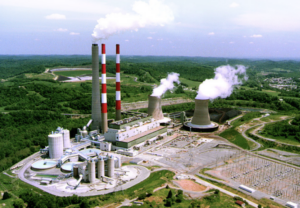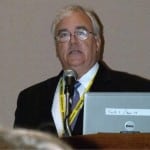The events in Japan, including the catastrophic destruction of a major nuclear power station, remind us of something we don’t like to think about: how to manage a physical disaster. But manage we must, and disaster management has become a specialty of its own. It even shows up at universities that offer programs and degrees in the subject and in computer software designed to help plan programs for preventing disasters, preparing for disasters, and recovering from disasters.
Disaster management figures prominently in the story of Japan’s nuclear power disaster, as utility and power plant managers and engineers seek to understand just what happened at the Fukushima power station, how it could have been prevented, and how response could have been better. Long-term response to the disaster is going to be a costly process around the world. Germany is putting its nuclear units built before 1980 under special scrutiny. China, the most enthusiastic recent builder of nuclear plants, is putting on the construction brakes while it looks at disaster management.
Clearly, the first step in disaster management is prevention. This is true for all potentially dangerous technologies, as surely we have learned from the Deepwater Horizon oil spill; the Upper Big Branch coal disaster; the trapped Chilean copper miners; the natural gas pipeline explosion in San Bruno, Calif.; and other events that remind us we live and work in a world that does not guarantee our safety. A Wall Street Journal editorial shortly after the events in Japan perceptively noted, "The paradox of material and technological progress is that we seem to become more risk-averse the safer it makes us." The editorial added, "Modern civilization is in the daily business of measuring and mitigating risk, but its advance requires that we continue to take risk."
In the U.S. in the subspecialty of nuclear disaster management, the Nuclear Energy Institute (NEI) has announced an industry program to test how the nation’s 104 operating reactors would stand up to emergencies beyond those for which the plants were designed. NEI’s Tony Pietrangelo, chief nuclear officer for the industry lobbying and trade group, said the nation’s chief nuclear operators agreed to the plan for plant-by-plant walk-downs of plant emergency and backup equipment. "What the chief nuclear operators agreed to do," he said, "was focus more on beyond design-basis events. At least the initial feedback we’re getting from the Fukushima events is that these were beyond design-basis events."
The website WiseGeek has a useful discussion of disaster management. It notes, "A truly comprehensive disaster management plan will encompass a wide range of possibilities that can easily be adapted in the event one disaster sets off a chain reaction of other types of disasters in its wake. Because of the need to continue functioning in emergency situations, disaster management plans are often multi-layered and can address such issues as floods, hurricanes, fires, bombings, and even mass failures of utilities or the rapid spread of disease.
"Once an incident has taken place, these plans for response and recovery are set into motion, to best remedy the situation. Disaster management is a multi-level plan of attack for handling catastrophic incidents."
Disasters can be manmade. That was the case at Three Mile Island, where plant operators failed to grasp what was happening inside the reactor (a stuck valve). They can also be the product of natural forces, as in Japan.
Disasters most often occur "outside the box," that is, outside the parameters of conventional thought. In nuclear power—and this applies equally to conventional power generation—the known event, the one for which the plants were designed and emergency response prepared, was a large loss of coolant accident (or LOCA). What occurred in Harrisburg, Pa., in late March 1979 was a small LOCA. In Japan, the event—a massive earthquake followed by a massive tsunami—was not unimaginable, but it was unimagined. That same was true at Chernobyl, a man-made catastrophe.
In attempting to predict and set the conditions for managing disasters, we must also avoid hubris. These are complex events that we are contemplating, often beyond our full ken. Economist F.A. Hayek in his 1974 Nobel Prize lecture "The Pretence of Knowledge," noted that in "disciplines that deal with essentially complex phenomena, the aspects of the events to be accounted for about which we can get quantitative data are necessarily limited and may not include the important ones."
Federal Energy Regulatory Commission member Philip D. Moeller, at FERC’s regular monthly meeting on March 17, raised the issue of emergency planning and management: "I am interested in making sure that our basic infrastructure is operated and built in such a way that it is most resilient to even the most severe disasters, so that recovery efforts can move forward as quickly as possible."
Moeller said power plant operators "should examine our inventories of electric transformers and other vital assets. We should examine our pre-positioning of assets, and further review our ability to coordinate with the gas, water, nuclear, and telecommunications industries. Our planning for worst-possible events also needs further study. And we should consider whether any of this needs to be mandated, or if such goals can be achieved without government mandate." He concluded that events in Japan "prove that no matter how well we have designed, built, and operated our basic infrastructure, natural events can radically disrupt our lives, and we need to be prepared."
Stuff happens, and management matters.
—Kennedy Maize is MANAGING POWER’s executive editor.








